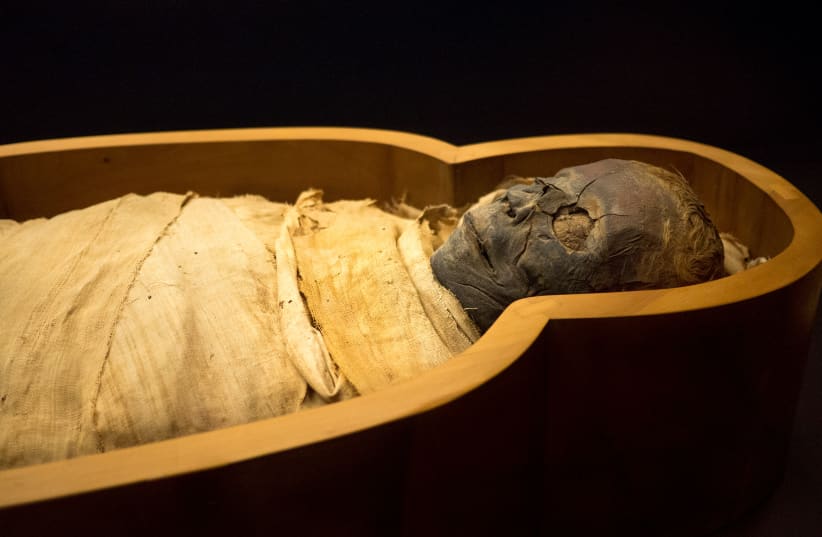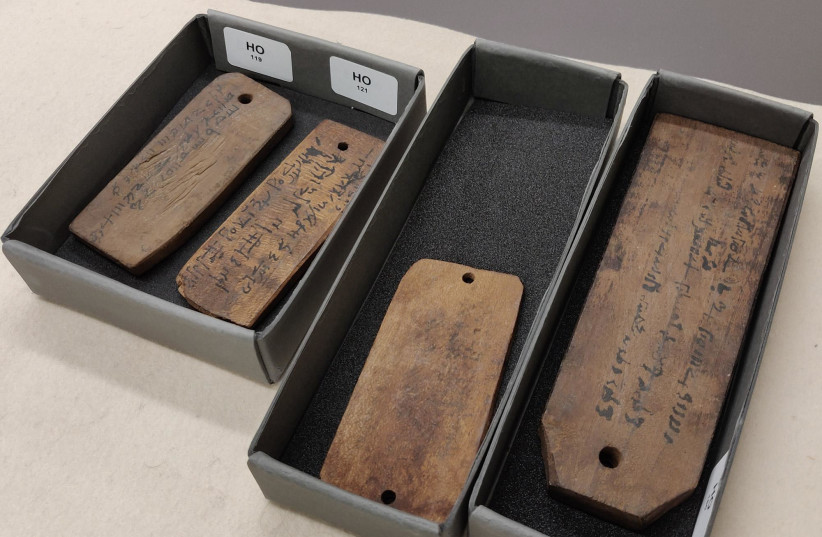Ancient Egyptian burial practices can supply vital information on the state of the climate in Egypt at the time of Roman control, a new study has found.
The peer-reviewed study, published in the International Journal of Wood Culture, found a new way to examine the ancient Mediterranean climate.
To understand the climate trends in Egypt when it was governed by the Roman Empire, scientists analyzed wooden coffin labels attached to mummies from the era.
What information can the labels give?
“Mummy labels are just a proxy tool that we are using to reconstruct the climate of Roman Egypt, the breadbasket of the Roman Empire, and understand how climate fluctuations influenced changes in society, government and the economy,” explains Sabine Huebner, leader of the Swiss National Science Foundation project.
When the dead were about to be embalmed, families would attach a wooden label with the person’s full name and a religious message to the body. The labels identified the body so that embalmers did not mix up the bandaged bodies.
The scientists used the labels, not just to identify buried persons, but to understand the climate at the time. The wooden artifacts grew rings with each passing year. Good years are indicated by broad rings, since the tree would have grown faster. Narrower rings were indicative of drought.A large sample size is needed to gather enough information to prove that there was a consistent trend and to assess how the rings grow different among different tree species.
“That’s why mummy labels are ideal for our purposes”, explains François Blondel, an archaeologist at the University of Geneva. “Not only are there thousands of them in museums around the world, they’re made from lots of different tree species, such as pine, cypress, cedar and juniper”.
The researchers gathered over 300 samples. They then identified any overlaps where rings matched. The researchers found that the labels were often made with the same wood if the people had died around the same time – which could provide possible data on pandemics.
While the rings confirmed information about the climate of the eastern Mediterranean, dating that information has proven tricky.
Blondel explained “We can’t yet assign a precise date to the rings and the events they record.”
The researchers plan to search for a datable specimen, or failing that, they will seek museum permission to carbon date the samples.
What information can this give on Roman-controlled ancient Egypt?
As previously mentioned, the rings of the wooden label indicated the ecological state of Egypt at the time of cutting. Thin circles indicated drought and robust circles indicated an ideal climate.
The researchers also found that wealth was heavily indicated by the type of wood used. Wealthier and more prominent individuals often used labels made from wood imported from other places in the empire.
"Even if it remains difficult to differentiate imported broadleaved wood from that endemic to Egypt without anatomical identification, we can be sure that conifer wood was all imported, thereby underlining the importance of wood trade during the period," wrote the authors of the study.

